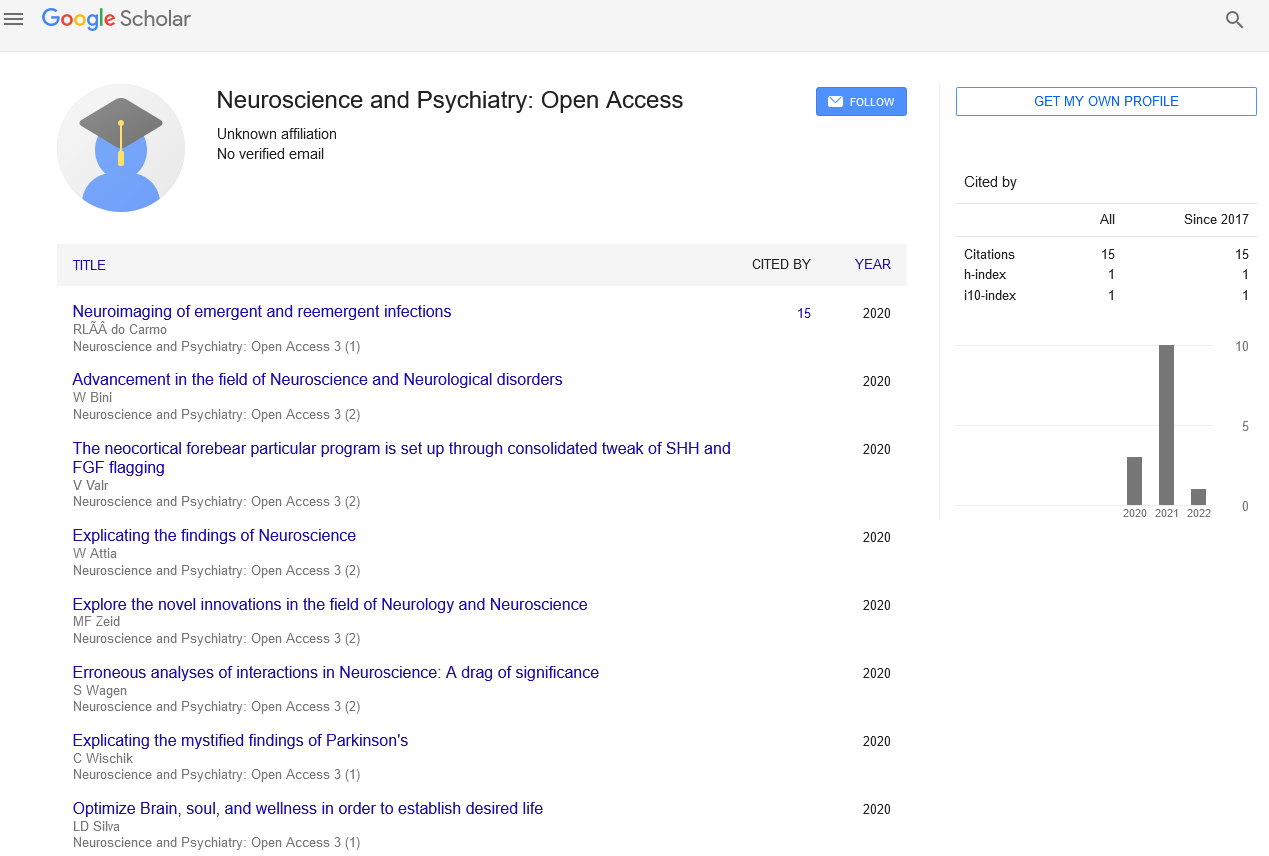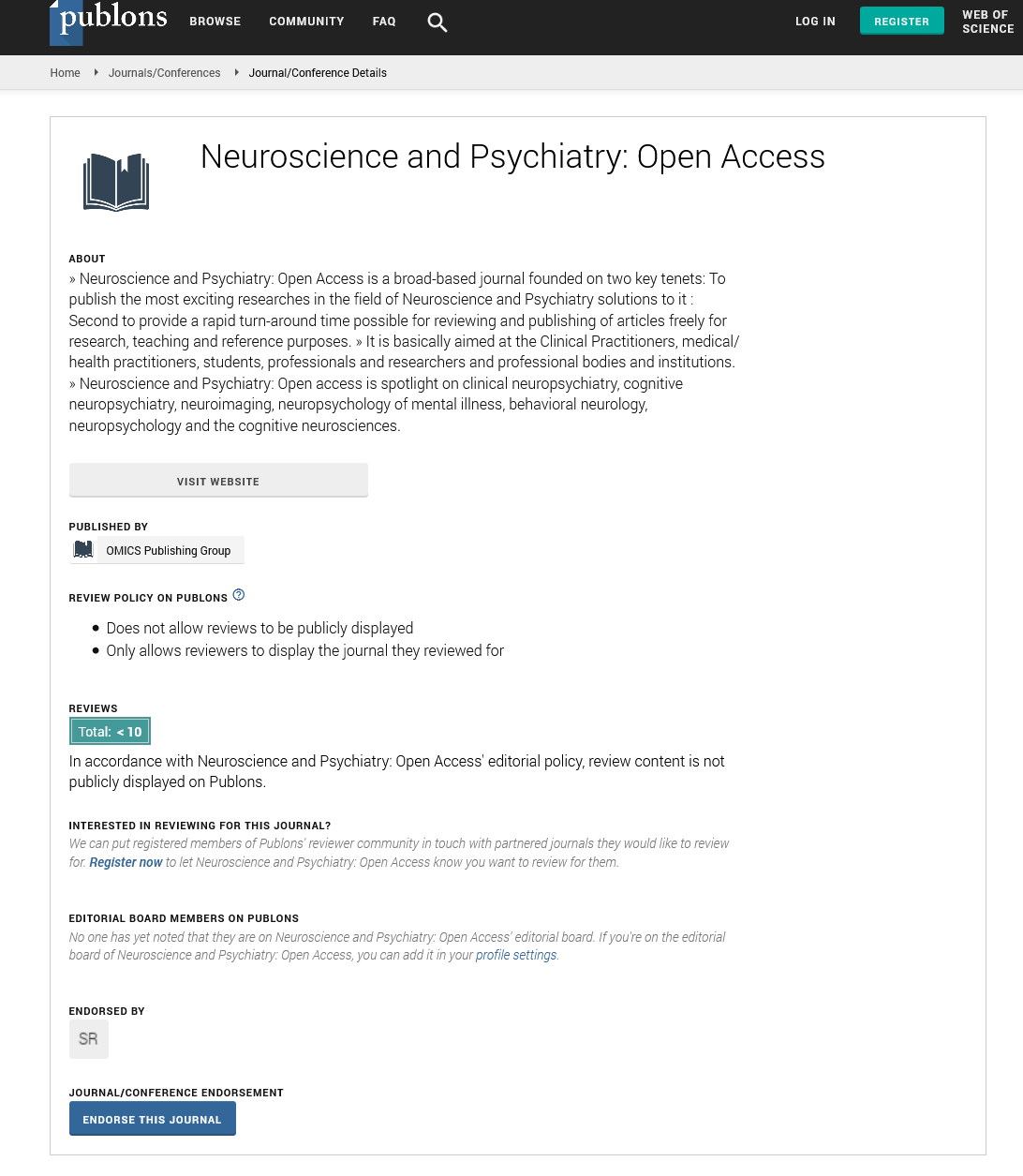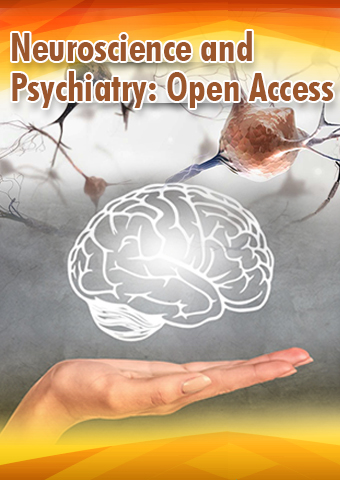Commentary - Neuroscience and Psychiatry: Open Access (2023) Volume 6, Issue 1
NDI: A Database and Data Interface for Neuroscience Physiology and Imaging Experiments that Are Platform-Independent
Alexander Ackroyd*
Department of neuroscience, Ethiopia
Department of neuroscience, Ethiopia
E-mail: Ackroyd_A@gmail.com
Received: 28-Jan-2023, Manuscript No. npoa-23-87721; Editor assigned: 31-Jan-2023, Pre-QC No. npoa-23- 87721 (PQ); Reviewed: 14-Feb-2023, QC No. npoa-23-87721; Revised: 16- Feb-2023, Manuscript No. npoa-23- 87721 (R); Published: 23-Feb-2023; DOI: 10.37532/npoa.2023.6(1).07-08
Abstract
Neuroscience Data Interface (NDI) is a platform-independent standard that allows an analyst to use and create software that functions independently of the raw data format or file organization. The interface is based on a simple vocabulary that describes common neuroscience experiment apparatus and storage devices. The relationships and history between the experiment elements and documents are stored as documents in a scalable, query able database that also stores the analyses' results. Applications can focus on calculation rather than data format or organization thanks to the interface's ability to facilitate the creation of an application ecosystem. Individual labs can exchange and analyze data using this tool, and it can also be used to curate neuroscience data for searchable archives.
Keywords
BRAIN Initiative • Brain science • Data acquisition • Data archive • Queries
Introduction
Currently, physiology experiments are typically carried out using bespoke experimental rigs that collect data in novel, inventive, and peculiar ways. Neurophysiology or neuroimaging rigs frequently make use of a number of different pieces of equipment that are from different eras and have vastly different levels of engineering sophistication [1]. On a rig, each data acquisition device typically has its own clock, sampling rate, and disk storage method. Digital heterogeneity comes in at least two varieties in addition to this physical heterogeneity: the organization of the data and metadata into files or folders, which varies greatly from device to device and lab to lab, and the digital format of the data, which typically varies from device to device. While the current situation makes it possible to measure experiments with a lot of imagination, it makes it hard to analyze data and make it repeatable [2]. The majority of laboratories are unable to analyze the data of other laboratories without spending at least a month developing conversion software. Because of this obstacle, the majority of laboratories or investigators create their own analysis software and only partially test it themselves. In addition, common, best-of-breed analysis packages that are devoted to analyzing particular classes of data are hindered in their development and utility by this barrier [3]. These packages could be developed if some significant efforts to establish file format standards were followed. However, the fact that users are typically required to first convert their data into the standard format is itself a barrier to adoption of these standards. Until now, very few labs have used these packages, but the situation is getting better. A tool that makes it possible for an analyst to quickly read and analyze data, regardless of whether it is stored in standardized container formats or is organized in a unique way would be ideal [4]. We present a novel approach that makes it possible to create common analysis tools without having to use the same file format: a Data Interface for Neuroscience. A standard way to specify and address the data that are gathered during neuroscience experiments is provided by the interface. The interface provides a vocabulary and conceptual framework for specifying recordings and analyses at the highest level. An extensible set of open-source code and interface standards for reading from a variety of data formats and specifying how the experimental data are organized on disk are included in the implementation level of the interface [5]. The interface does not depend on the computing language or platform. In order to store the results of calculations performed on the raw data, the interface includes a scalable database that can be read and written to by user-created or commercial applications in order to construct intricate, layered analyses. These database entries can be on a user's computer or in the cloud, and they are specified with platform-independent, machine- and human-readable metadata.
Methods
Over the course of five years, the neural data interface in its current form was designed and revised. Through discussions with Brandeis neuroscience and computer science undergraduate and graduate students, the system's conceptual framework was developed [6]. The Van Hooser Lab's Laboratory Information Management System served as the foundation for the system, which was rebuilt twice from the ground up to include essential features and simplify the user interface and external concepts. In, the interface was tested. There are installation instructions and a number of tutorials on the website that show you how to use NDI [7]. In order to conduct a comprehensive pipeline analysis, NDI was modified and debugged as required, and it was used extensively to analyze Roy's data. Additionally, the process of creating tutorials in response to user feedback revealed bugs and extraneous complexity that were fixed or simplified.
High-level implementation
There are two layers in the current NDI software implementation: a low-level layer of objects that implement the details of the high-level objects and a high-level layer of core objects that are described here [8]. The external interface of NDI has been made stable by separating the high-level objects from the low-level objects. At the same time, open-source products that implement file reading or the database can be switched in and out over time without significantly affecting how the user or analyst uses the interface. The highlevel interface is meant to be a kind of "neural data operating system" that can be used to build GUIs and other programs [9]. However, the core of NDI doesn't say which graphical user interfaces should be used or which database products should be used.
Discussion
We have created an NDI that makes it significantly easier to analyze datasets from other labs. An analyst can quickly deal with data that is acquired in a variety of formats and stored on disk in a variety of ways thanks to the interface [10]. It gives tools for synchronizing time between DAQs and lets the analyst talk directly to experimental probes while the interface reads data from the underlying DAQ systems. The interface has a database that lets experiment objects, analyses, and analyses of analyses are stored as documents. This lets you build an application ecosystem that can analyze data regardless of how it is formatted or organized. Anyone who uses the interface can access the dataset's results, so the dataset and its analyses are carefully selected to be distributed widely.
References
- Cannon RC, Howell FW, Goddard NH et al. Non-curated distributed databases for experimental data and models in neuroscience. Network. 13, 415–428 (2002).
- Farber GK. Can data repositories help find effective treatments for complex disease. Prog Neurobiol. 152, 200–212 (2017).
- Lidierth M. stool: a MATLAB-based environment for sharing laboratory-developed software to analyze biological signals. J Neurosci Methods. 178, 188–196 (2009).
- Nichols TE, Das S, Eickhoff SB et al. Best practices in data analysis and sharing in neuroimaging using MRI. Nat Neurosci. 20, 299–303 (2017).
- Poldrack RA, Gorgolewski KJ. OpenfMRI: open sharing of task fMRI data. Neuroimage. 144, 259–261 (2017).
- Saad ZS, Chen G, Reynolds RC. Functional imaging analysis contest (FIAC) analysis according to AFNI and SUMA. Hum Brain Mapp. 27, 417–424 (2006).
- Teeters JL, Godfrey K, Young R et al. Neurodata without borders: creating a common data format for neurophysiology. Neuron. 88, 629–634 (2015).
- Wiener M, Sommer FT, Ives ZG et al. enabling an open data ecosystem for the neurosciences. Neuron. 92, 617–621 (2016).
- Grewe J, Wachtler T, Benda J. A bottom-up approach to data annotation in neurophysiology. Front Neuroinform. 5, 16 (2011).
- Lepperod ME, Dragly SA, Buccino AP et al. Experimental pipeline (expipe): a lightweight data management platform to simplify the steps from experiment to data analysis. Front Neuroinform.14, 30 (2020).
Indexed at, Google Scholar, Crossref
Indexed at, Google Scholar, Crossref
Indexed at, Google Scholar, Crossref
Indexed at, Google Scholar, Crossref
Indexed at, Google Scholar, Crossref
Indexed at, Google Scholar, Crossref
Indexed at, Google Scholar, Crossref


